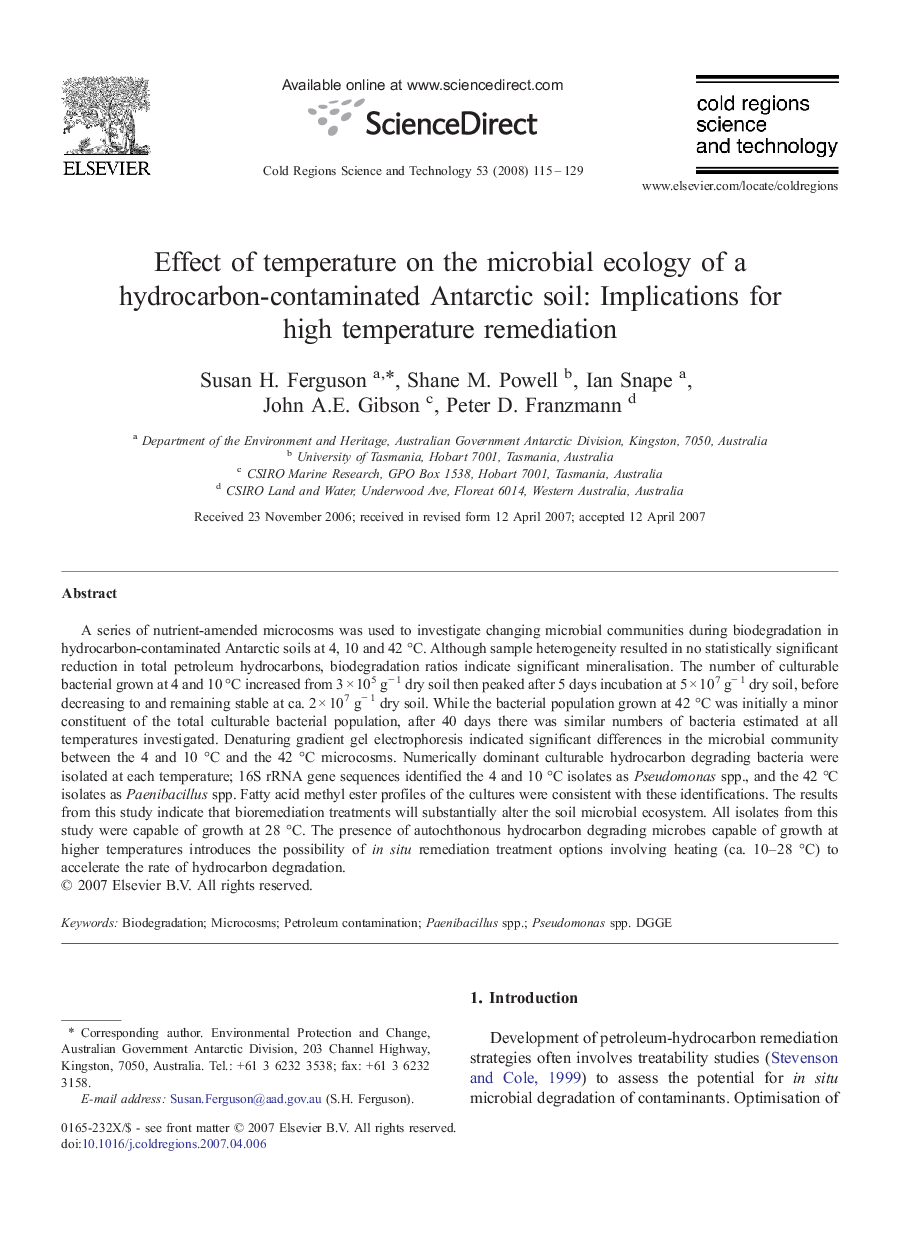| کد مقاله | کد نشریه | سال انتشار | مقاله انگلیسی | نسخه تمام متن |
|---|---|---|---|---|
| 4676772 | 1347784 | 2008 | 15 صفحه PDF | دانلود رایگان |

A series of nutrient-amended microcosms was used to investigate changing microbial communities during biodegradation in hydrocarbon-contaminated Antarctic soils at 4, 10 and 42 °C. Although sample heterogeneity resulted in no statistically significant reduction in total petroleum hydrocarbons, biodegradation ratios indicate significant mineralisation. The number of culturable bacterial grown at 4 and 10 °C increased from 3 × 105 g− 1 dry soil then peaked after 5 days incubation at 5 × 107 g− 1 dry soil, before decreasing to and remaining stable at ca. 2 × 107 g− 1 dry soil. While the bacterial population grown at 42 °C was initially a minor constituent of the total culturable bacterial population, after 40 days there was similar numbers of bacteria estimated at all temperatures investigated. Denaturing gradient gel electrophoresis indicated significant differences in the microbial community between the 4 and 10 °C and the 42 °C microcosms. Numerically dominant culturable hydrocarbon degrading bacteria were isolated at each temperature; 16S rRNA gene sequences identified the 4 and 10 °C isolates as Pseudomonas spp., and the 42 °C isolates as Paenibacillus spp. Fatty acid methyl ester profiles of the cultures were consistent with these identifications. The results from this study indicate that bioremediation treatments will substantially alter the soil microbial ecosystem. All isolates from this study were capable of growth at 28 °C. The presence of autochthonous hydrocarbon degrading microbes capable of growth at higher temperatures introduces the possibility of in situ remediation treatment options involving heating (ca. 10–28 °C) to accelerate the rate of hydrocarbon degradation.
Journal: Cold Regions Science and Technology - Volume 53, Issue 1, June 2008, Pages 115–129